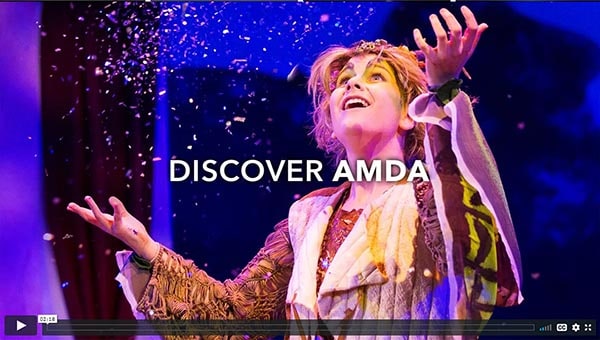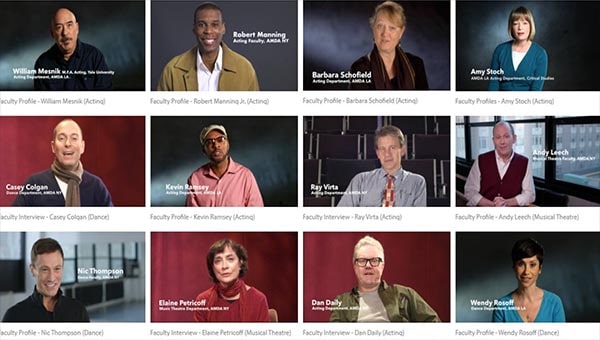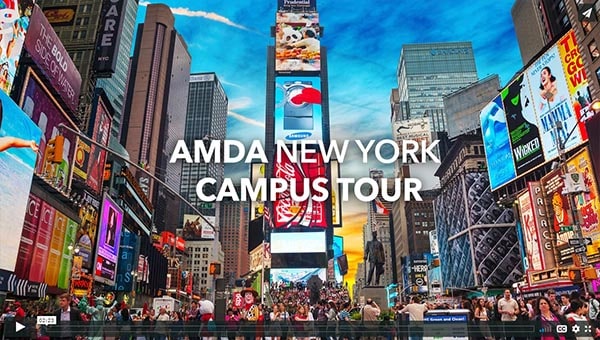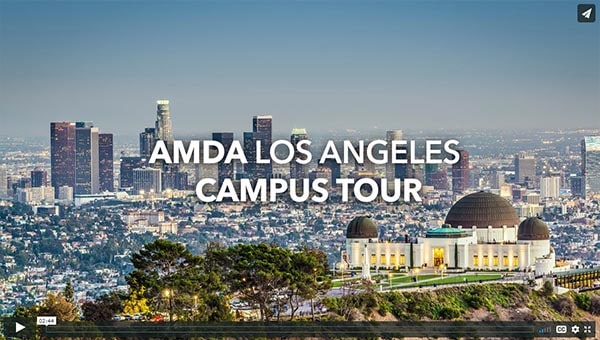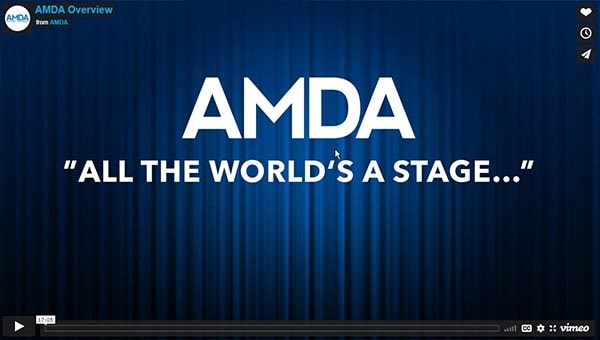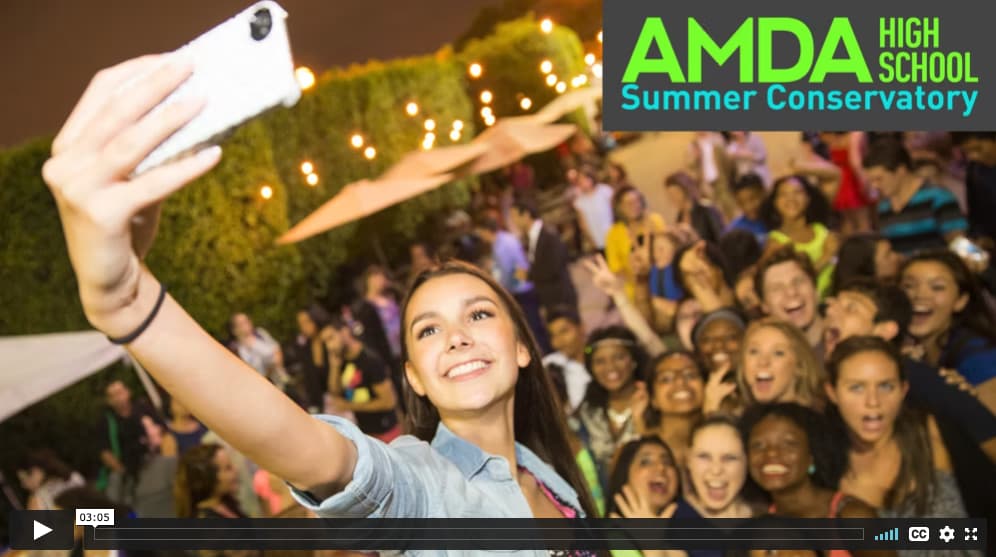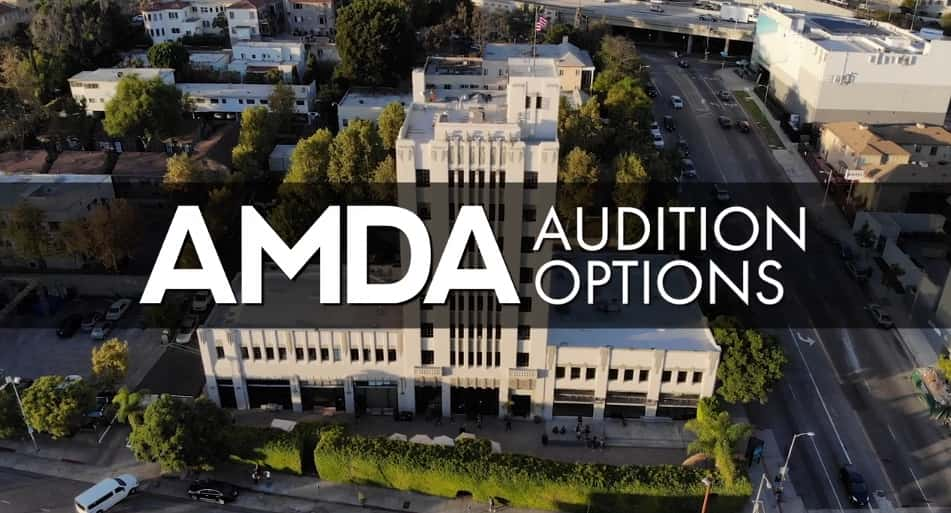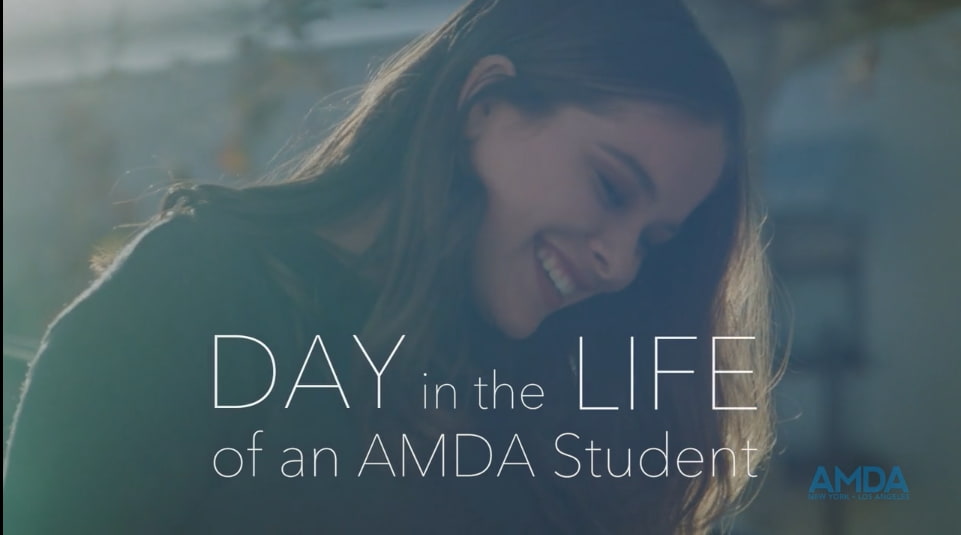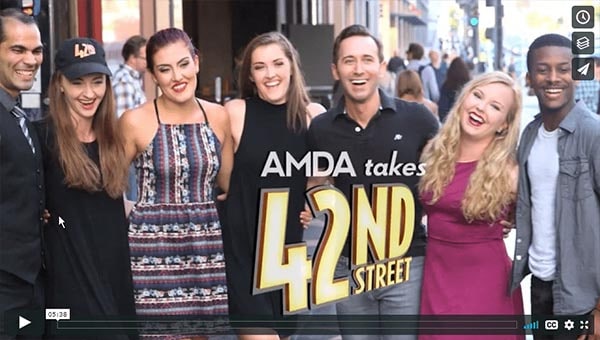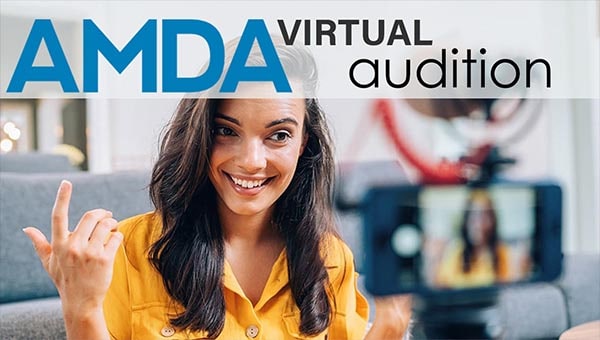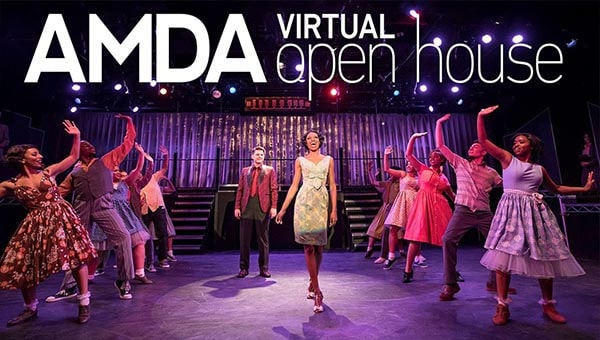WALK IN WITH YOUR CROWN ON
March 08, 2023 - Alumni, Magazine
ZHAILON LEVINGSTON DIRECTS FOR ADVOCACY, COMMUNITY, AND AWARD-WINNING BROADWAY SHOWS.
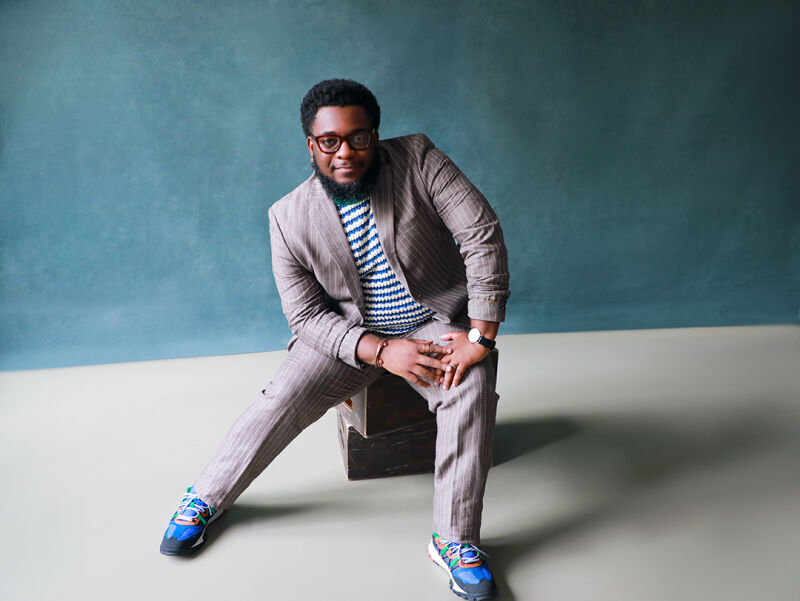
Photo by BRAINART Photography
For Zhailon Levingston — Louisiana native, AMDA graduate and multi-hyphenate artist — storytelling is a sacred duty, a compulsion borne from an earnest desire to lift the voices of his community and promote social justice. Since graduating from AMDA, Zhailon has been making waves throughout the performing arts industry, making his Broadway directorial debut as the resident director of the acclaimed Tina: The Tina Turner Musical. In 2021, Zhailon made history as the youngest Black director on Broadway for his work on Chicken & Biscuits.
“ I’m grateful I have the opportunity to inspire someone… They Can see someone like me and say, ‘OK, there’s a him, so there can be a me, too.’”
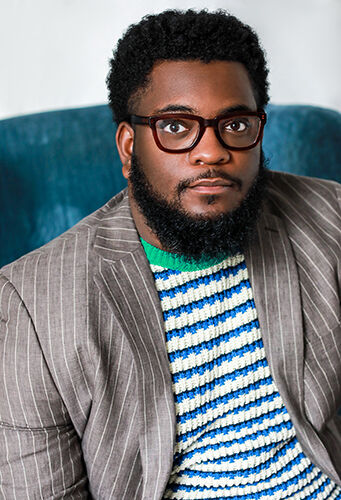
Photo by BRAINART Photography
Zhailon’s other directing credits include The Years That Went Wrong, Chariot Part 2, Mother of Pearl, and the South Korean premiere of Hadestown. Previously, he collaborated with the creative team for the inaugural Antonyo Awards, writing a variety of original works, including The Hole: A New American Play, which was featured at the 2021 Genesis Festival of New Plays. Zhailon is the cofounder of the Broadway Advocacy Coalition, where he presently serves as the director of industry.
We recently sat down with Zhailon and discussed his background and creative process.
Can you tell us about your background and how it led to your interest in directing?
I grew up going to a performing arts school — not because it was a performing arts school, but because it was a magnet school, and my mom wanted to put me in the best elementary school she could find. The blessing of that exposed me to theatre at such an early age. I remember seeing my school’s production of The Jungle Book when I was in kindergarten, and that had a real, lasting impact on me.
Back then, I didn’t know that theater was a job. I just thought it was a thing we did in our school that was fun. But my fifth grade’s production of Aladdin pretty much changed my life. I was cast as the short, Black, chubby Aladdin. It was in that grade I realized theater was a job. I could just tell people when they asked what I wanted to do when I grew up, “This thing, this thing, this thing!” From that point on, I was involved in community theater, doing about three or four shows a year every year of high school.
In Louisiana, we didn’t have a robust theater scene, so you occasionally had to do other things than perform. Sometimes I was choreographing, other times I was codirecting. I remember writing pageants for my church, too. Those tools were already developing, but I was of the understanding that you’re supposed to act for a really long time until someone taps you on the shoulder and says, “You can direct now.” That’s not necessarily how it goes.
What shaped your early perceptions of directing?
I didn’t see anyone that was my age and looked like me directing. Honestly, it’s still hard to find in the context of professional theatre in New York. I had seen lots of representation of Black people across the field in general, from a very early age. The idea of our bodies being on stage was never unbelievable or extraordinary to me. But there was this weird thing with directing where it felt very unusual for Black people, Black men in particular, leading a room in theatre.
Choosing directing as my path required being in the crucible of New York and figuring out how to make money. Directing was not only what I was good at and found intellectually validating, spiritually, it also felt like what I was supposed to be doing. My ministry was going to be built on the medium of directing.
How was your experience at AMDA and in what ways did it prepare you for your current career?
I went to AMDA LA through the BFA Music Theatre program and I had a really great experience. I think the thing that was most fundamental for me was the freedom and opportunity to create my own work. I still hadn’t told myself directing was something I could do right out of college, but the skills were starting to be honed through my coursework. At AMDA, I was able to do my own student project, produce my own musical and create a song cycle with a close friend of mine — all while performing and taking classes. In the summers, I would go back to Louisiana and direct.
After graduating from AMDA, you earned your Equity card in the Los Angeles premiere of The Christians and then moved to New York City. What did those early days look like?
My first job was selling Broadway tickets on the street, which was not fun. Still, I was auditioning and participating in workshops, occasionally receiving callbacks for things that were exciting to me. But very quickly I felt like, this isn’t my ministry.
In 2018 I decided to quit any day job I had and just pursue directing. I went back to Louisiana to direct and choreograph a show, telling myself, “If I can do this big ol’ show, then I can just do it.” And I did. After those three months, I never had a day job again. I just grinded and networked to make things possible. I didn’t know how I was going to pay rent for about four years, but that was my path.
Do you see yourself as a multi-hyphenate artist?
I totally do, that was actually my Instagram bio for many years! We live in a time where it doesn’t make sense, on multiple levels, to just do one thing. It doesn’t make sense for me, artistically, to assume that just because you’re a dancer, you can’t act; just because you’re an actor, you can’t sing. It’s presumptuous in these times and doesn’t make sense from a business standpoint to not try to create as many streams of income as possible, especially during such a turbulent time in our industry. I don’t think it’s limited to our industry, either. People are becoming multi-hyphenate in different careers as well. I think it’s the way in which our generation is navigating the system that we’re living in.
I used to tell myself — and I’ve started to tell myself more now — that I am in the service of story under the direction of form. That allows me not to be pigeonholed into any one kind of identity. I’m just here to tell a story, and the story will tell me how it needs to be told. Sometimes I’ll need to write it, sometimes I’ll need to act it, sometimes I’ll need to direct it, sometimes I’ll need to produce it. My job as an artist is to be obedient to the story.
“ Most of the work I do is socially conscious. Activism and advocacy was my way into directing things.”

Photo by Emilio Madrid
Activism is a major part of who you are as an artist. What inspired your #WORDSONWHITE project and how did it come together?
Around the same time I was auditioning, I started this organization called #WORDSONWHITE, which was started in response to the deaths of Alton Sterling and Philando Castile. It started as a one-night-only thing and developed from there. I had access to a small theater downtown and somehow got people to show up and read words from other artists, thought leaders and activists from the past.
My friend Rob and I came up with this idea to roll out this 25-foot-long white canvas, and instead of doing a talkback, we had people come up on stage with markers, pens and crayons to respond to what they just saw on the canvas. The dynamic of that was you’d end up having a lawyer on their knees alongside a 13-year-old girl, and this is how they’d first relate to each other. That initial idea developed into an entire campaign where we would go and do this work in parks, churches and schools. And all the while, I’m meeting playwrights and becoming very immersed in the National Black Theatre and Fire This Time Festival. Most of the work I do is socially conscious. Activism and advocacy was my way into directing things.
Is that what inspired you to cofound the Broadway Advocacy Coalition, a Tony Award–winning organization uniting artists, experts, students and community leaders to use storytelling and artistry to combat systemic racism?
The Broadway Advocacy Coalition came out of the Black Lives Matter movement. When we first started, the majority of our work was about getting people within the theatre industry to get outside of it. We were advocating for policy change. During the George Floyd incident, we thought, “We should look in our own backyard. We should turn inward and see all the ways in which policies are perpetuating anti-Blackness within our industry.”
It’s been an interesting journey because people talk about theatre being a microcosm of the bigger world. I think systemically it is too. What’s going on systemically in theatre is going on in the larger world as well. It was both heartbreaking and inspiring to take on all of this stuff going on in our backyard as a way of addressing what’s going on in the country.
What I hope is that Black people aren’t just stand-ins for representation. Rather, what’s represented is our whole being — our intellect, our spirit, our culture, our practices, our gods. That representation happens on stage, off stage, behind the curtain, in the audience. I think so often we’ve asked permission to be here as opposed to just taking the space we need to do our work.
So many people have already died for us to do that. I think we’re living in a time where you either choose to wear your crown or you don’t. I think the theatre industry is facing a reckoning of what it looks like when so many of us walk into it with our crowns on.
Are there other initiatives the Broadway Advocacy Coalition is working on that excite you?
The Broadway Advocacy Coalition is supporting a lot of programs like the Cody Renard Richard Scholarship. It’s been really enriching to see that program grow and see the kinds of applicants that we get there. It’s impossible to pick because they’re all so unbelievable. This new generation is so inspiring and amazing. We also have artist fellowships where we give resources to artists who are concentrating on how their work fits with advocacy efforts.
From your point of view, what are the greatest challenges currently facing the theatre industry and do you believe measures are being taken to appropriately respond?
I think the greatest challenge facing the theatre industry is an unbelievable lack of imagination in the face of resistance; the resistance being a changing world that will no longer hold the old ways of doing things.
I think we see COVID as this kind of disruption when I think it’s really been a flashlight, shining light on a system that has been doing things a certain way for many, many, many years. It’s kind of a red herring. Either you change the way you’re doing things and make things more sustainable and humane for the bodies that are actually contributing to these shows every night or you’re actually going to cease to exist.
It’s so clear there is no going back to normal. And it’s so clear for those who try to go back to normal, their shows will close, their actors will rebel, they’ll lose money. Now there are real consequences to not adapting. It’s actually been rather uninspiring to see the lack of imagination from the field in terms of the way we do our work. Not just the way we address certain kinds of societal problems, but literally the way we look at the whole machine.
I think a remedy is to not see Broadway as this special place but as a regional theatre, just like other states have a regional theatre space. The regional theatre has a certain responsibility to its community that commercial theatre doesn’t necessarily share. I’d just like to see more ethos from the commercial world that is more rooted in community and the way it treats bodies, the way it treats audiences and the way it welcomes people. The big umbrella that everything falls under, to me, is, are you going to adapt or are you going to die?
You’ve directed several productions of Douglas Lyons’ Chicken & Biscuits. What was it like bringing the show to Broadway?
The experience was like being shot out of a rocket. We found out in May of 2021 that we were going to go to Broadway, that we would open and start previews in September. That’s not a lot of time. We had to go into production in June and at the end of the job, I had to go to Korea to direct the Korean premiere of Hadestown. There was just so much happening.
The gig was just about waking up each day and doing the work, and doing the work, and doing the work. For a long time, I didn’t have any emotional reaction to what was happening outside of thinking, this is cool and exciting. It was also the best education possible in terms of how this industry works, how the business works, how departments work with each other, where there is resistance to new ideas and where there is openness to new ideas.
The show is hilarious, funny and heartfelt. As a director, it was really easy to tell whether we were on the right or wrong path because either I’d feel something and I’m laughing or I’m not. That was always a marker of production success — are we still having fun every day, are we laughing every day, are we becoming more of a family every day? And the answer was always yes. There were battles you had to overcome when putting a Broadway show up in general, but it was always outweighed by the joy.
What did you find most rewarding about this directing experience?
I think initially, the most beautiful part of the process for me was just the amount of people we were able to bring into the process. We had a completely Black creative team, which was such a blessing to have. I was in charge of overseeing the core creative team, but they’re in charge of finding their associates and assistants. They brought in even more people who aren’t typically in this space.
I remember looking around when we had our first circle, thinking, “Oh my god, this is the world we created.” There were so many different types of people — Black, white, old, young. Lots of women in the room, lots of Black women in the room. That was something I cherished so much.
With Chicken & Biscuits, you became the youngest Black Broadway director and second youngest director overall. How did that distinction resonate with you?
That whole experience was just cool to my nerd mind, the part of me that’s obsessed with musicals, Broadway and plays. But I didn’t really understand it to be a real part of history. I don’t even know if I really understand it now. Sometimes I tell people the longer I talk about it, the sadder it is. I mean, it’s 2022. Why should I be the second youngest director in Broadway history? At this point, the industry is over 100 years old. I’m grateful I have the opportunity to inspire someone who was like me, whose closest relationship to Broadway was from YouTube and Broadway.com. They can see someone like me and say, “OK, there’s a him, so there can be a me, too.”
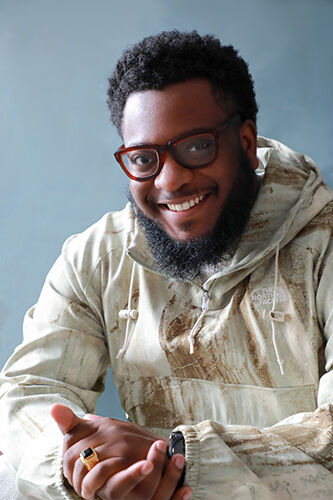
Photo by BRAINART Photography
You also directed a Korean adaptation of Hadestown. How did that opportunity come about and were there any notable distinctions from directing shows in America?
It was crazy. One day, I just received a cold call about directing the Korean adaptation of the show. Rachel Chafkin, the show’s original director, was asking me to step in because she was pregnant. I had never worked on Hadestown in English, let alone, but I was such a huge fan of the show and that’s what really helped me be successful. The experience was great.
One of the distinctions is that in Korea, a lot of times, things are double and triple cast. The idea being that a lead shouldn’t be doing the show eight times a week, that a leading role is something to be shared. The audience response to that is they want to keep coming back because they want to see different versions of the show, over and over again. I thought that was really fascinating compared to the American model. Seeing so many people share roles, there wasn’t this sense of this is mine. Because of this, they were able to collaborate the way a creative team might collaborate — talk to each other, compare notes and things you don’t necessarily see happen between leads and understudies.
Working with an interpreter was also interesting. Occasionally I’d forget I didn’t speak the same language as the cast because the universal language of the room was storytelling and art. I’d be so excited about something and run up to someone, and they’d have to remind me they didn’t know what I was saying.
What’s your experience been like as an associate director for Tina?
I got the job in a kind of stereotypical way. All of my jobs are based on people I know, connections and relationships. But for this, someone recommended me from a pool of other directors. I received an email that mentioned Tina was looking for an associate director, asking me to submit a résumé. I knew my résumé did not look like whatever a résumé is supposed to say, but I thought whatever, you can see what I’ve been doing.
I didn’t think anything of it. I got called for an interview two months later with the director, called back for an interview with the choreographer the next day. I didn’t hear anything for a few days after that and was freaking out, but finally got the call offering me the job — and that I started in an hour.
I wasn’t on an associate director track, where I was hopping from show to show. I wasn’t interested in doing that, but it was Tina, and that means so much. It was these people and this moment which made it so appealing. So I said yes. It was a great additional crash course on this industry and all that it takes to make a show right.
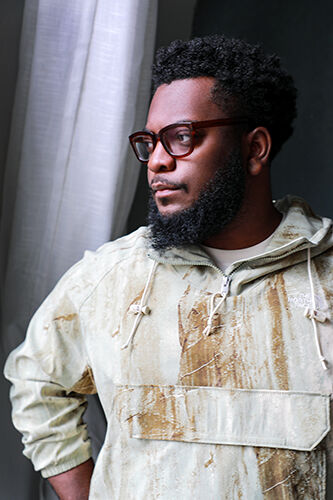
Photo by BRAINART Photography
“ Being an artist is not something we get to do, it’s something we have to do.”
What advice do you have for up-and-coming artists?
Three things were crucial to me. One is being a real nerd about whatever it is you’re interested in. There’s no excuse not to know who came before you in your field, who’s working right now or emerging. Really being a nerd, so that when you walk into those rooms you recognize those different people and start imagining those different connections. Like, what would it be like if those two people talk to each other? You can’t play that game unless you’re a true nerd about your interests.
The other thing I would say is find a community. When I showed up here, I googled “theatres in New York” and just plugged myself in. Just show up to places and make yourself known to people in your community. You’ll realize the industry is much smaller than you probably think it is overall.
The next thing I would say is just generate content. Just make things, that’s the only way you can learn, particularly if you’re a director. I know it can seem harder for actors right now during this weird COVID period, but figure out how to act. It’ll be the ones who figure it out who have the longevity needed to sustain a career. At the end of the day, the people who “make it” are just the people who hung around the longest. One job is not a career. Three jobs is not a career. Figure out how to do the thing you’ve been called to do under “impossible” circumstances. Being an artist is not something we get to do, it’s something we have to do. And that is the distinction.







